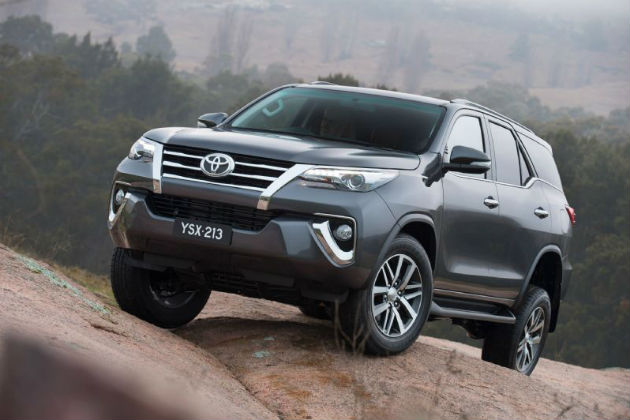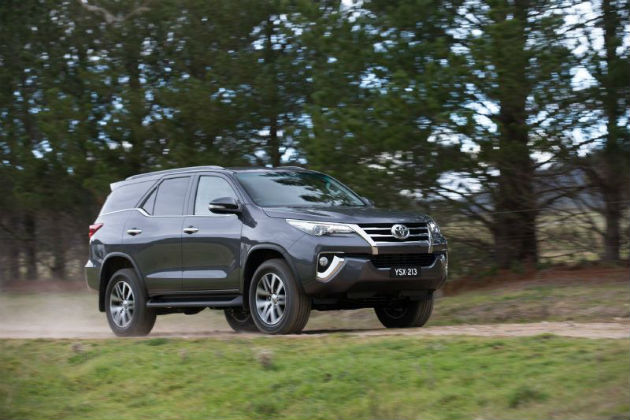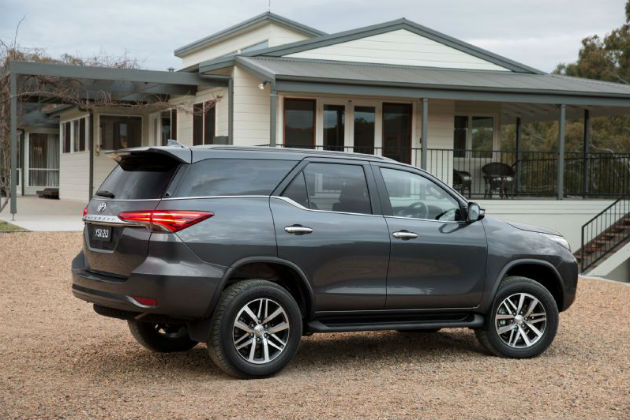20 November, 2015 By: Alex Forrest
Soon after it was launched in 2015, the Toyota Fortuner generated a huge amount of enquiries to the RAC. In fact, the only vehicle we were quizzed more about was its more renowned cousin, the new Hilux, which was launched around the same time.
The Fortuner is based on the same platform as the Hilux, but gets a closed in rear end instead of the ute tray, bringing with it the ability to seat seven, who enjoy the added comfort of a coil springs in the rear suspension.
The Fortuner is the seventh SUV to join the Toyota range, slotting in between the Kluger and the Prado.

However, in terms of the applications it’s suited to, it’s much closer to the Prado.
The Fortuner is a genuine, well equipped and tough off roader and this is where it really shines.
The Kluger is much more the suburban SUV, which has the extra on-road handling benefits of a lower centre of gravity, lower profile tyres, independent rear suspension plus the refinement of that creamy-smooth 3.5-litre V6 petrol engine.
Toyota has touted the Fortuner as being an option for those looking for a Kluger with a diesel engine, however the Fortuner is a very different and slightly smaller vehicle compared with the Kluger.
Nonetheless, the Fortuner does have appeal as a seven-seater with serious off road ability which is gentler on the wallet than the Prado.
The Fortuner’s main competitors are also relatively new to the market. These include the Ford Everest, Mitsubishi Pajero Sport, Holden Colorado 7 and Isuzu MUX.
Staying true to what’s expected of a serious off road vehicle, the Fortuner has separate low-range gearing and the same underpinnings as the Hilux, except for the aforementioned coil springs in the rear.

There are three model grades, comprising the GX, GXL and Crusade. The new 2.8-litre direct-injection turbo-diesel, which was also introduced in the new Hilux and Prado recently, is the only engine available across the range.
That’s not a bad thing, because it’s a better lump than the 3.0-litre that came before it. Torque output is up by up to 25 per cent, and fuel economy and emissions are better by up to 10 per cent.
The engine makes 130kW and 450Nm, though torque has been wound back slightly for the manual version, to 420Nm. Both engines develop their peak torque very low in the rev range, which makes this engine an excellent match for the demands of hard off-roading.
Wheel articulation is excellent in the Fortuner, and through challenging sections of the powerlines track in the Perth hills, the Fortuner showed just how rough the terrain had to get before it finally lifted a wheel.

The interior is the most refined we have experienced of the four wheel drive-based off-road wagons. We are yet to drive the Ford Everest though, which will roll into the test garage in coming weeks.
The Fortuner mirrors the Hilux with its significant step up in the quality of materials used in the interior, including soft-touch surfaces and well-placed supports for the driver and passenger.
The third row seats are removable, but if you do want to carry around the seven seat option, they need to be folded up against the windows as in an old Prado, which is not ideal but also the price you pay for having long-travel suspension.
A significant level of Australian engineering input went into the Fortuner, which is being sold into global markets. In particular, the Fortuner’s chassis development and coil-spring suspension came thanks to local engineering.
The Australian engineers, who were working on long-term assignment in Japan, also designed the rear body section and developed the Fortuner’s wiring harness.
They’ve done a good job, and if you need a seven-seater SUV with some serious off-road ability, keep the Fortuner on your list.
It’s no Kluger on the road, but off road, the Kluger is certainly no Fortuner.
| Price driveaway: | from $53,633 |
|---|---|
| Engine: | 2.8-litre turbo diesel |
| Power: | 130kW @ 3400rpm |
| Torque: | 450Nm @ 1600-2400rpm (auto); 420Nm @ 1400-2600rpm (manual) |
| Claimed fuel economy: | 8.6L/100km |
| ANCAP Rating: | 5 stars |
| CO2 Emissions: | 228g/km |
